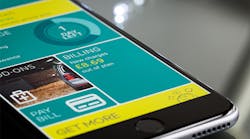Consumers love their mobile phones. In fact, a global study by Apigee found that 85% of smartphone owners interviewed said they would rather go without water than their mobile apps. Today, people are comfortable using mobile in nearly every aspect of their personal lives and spend more time on their mobile devices than on traditional computing devices. On Black Friday last year, ecommerce on mobile devices accounted for 57.2% of all online traffic and 36.2% of all online sales (according to IBM’s Black Friday report). With growing usage and more than 6 million smartphone subscriptions projected to be in use by 2020, it may seem that mobile is old news. Yet nothing could be further from the truth. While mobility has utterly changed the life of the consumer, its transformative power has not yet reached the workplace.
When companies connect mobile functionality with their business processes, it will redefine how millions of people perform their jobs every day. To be clear, mobility in the workplace is more than email on a phone or instant chat. Instead, Mobile 2.0 is about bringing people closer to the mission-critical, enterprise data they need to get their work done while using devices they love to use, from any location.
Currently, organizations are learning how best to analyze data generated from the Internet of Things and use it to make more informed decisions. Known as Big Data, this information is helping companies improve operations, lower costs, and increase profitability. Data analytics on a manufacturing floor, for example, are being used to determine root causes of asset failures, predict upcoming maintenance needs, determine optimal timing for follow-up work, and even make automatic adjustments to production lines to maintain quality and uptime.
In parallel with Big Data business applications, mobile technology has also been rapidly advancing. Modern mobile devices are GPS-enabled with features such as front- and rear-facing cameras, longer-lasting batteries, expandable memory, voice commands, biometric authentication features, video, and fast processors. Using these features, existing mobile applications help workers, keep track of time or expenses, determine the best route to job sites, and access relevant information. However, it’s when new applications combine a company’s data-enriched processes with the features of a mobile device that the value a Mobile 2.0 environment can be clearly understood.
Mobile 2.0 applications can be found across all industries. Below are a few examples that illustrate how new business-integrated mobile apps could help companies thrive in the digital economy:
- Field service maintenance — When a mobile device is integrated with a company’s maintenance system, on-site workers are able to quickly evaluate an asset and take action to restore functionality. More specifically, if a machine breaks, photos can automatically detect the asset, pull up the maintenance schedule, review the warranty, and contact the manufacturer of parts. Contextual assembly and repair instructions, as well as safety check guidance, can be done with contextual video and audio for hands-free assistance. Additionally, geolocation and certification level of technicians helps determine which certified technician to dispatch for the fastest emergency response.
- Medical services — Using a mobile device, a medical professional can access a patient’s electronic medical records, then seamlessly and securely share the latest data with other healthcare professionals for improved patient healthcare. Video-based collaboration also helps medical teams work with remote experts for diagnostics on patients, as well as on medical equipment maintenance needs. Once a patient is discharged, mobile applications help track test results, send notifications, and generate alerts if there are complications or allergic reactions.
- Pre-pay utilities — Similar to the way in which consumers pay for phone minutes prior to usage, when mobile phones are connected to back-end utilities systems, people will be able to pre-pay for energy usage based on their budgets or estimated future use.
- Issues resolution — If the work in process is not meeting desired quality specifications (e.g. chemical composition, dimensions of tubes, or tolerance levels of machine parts), on-the-spot decisions can be made directly from the mobile device including re-routing processes, ordering replacement raw material stock, and notifying customers if delivery commitments will be impacted.
These applications are just the beginning of a new way to work. In order for Mobile 2.0 to become mainstream and pervasive throughout the business world, companies need developers who understand how to create applications for both mobile devices and enterprise systems. In the past, developers for mobile phones and developers for corporate solutions have remained two distinct groups. Combining these knowledge areas is a new skill set, which is why academies are being set up to offer resources and share know-how. The resulting new applications will provide users with access to critical enterprise data and processes through easy-to-use interfaces that will allow them to make decisions and take action directly from their mobile devices.
To thrive and grow in a digital economy, companies must be able to provide customers with outstanding, customized service; exchange real-time information with supply chain partners; and empower their workforce with the ability to make insightful decisions at every level. To do so requires a digital core system that easily connects to workers, mobile devices, and business networks in real-time. Just as mobile phones and tablets have changed how consumers interact with the world around them, so will they help forever alter the way people perform their jobs.



